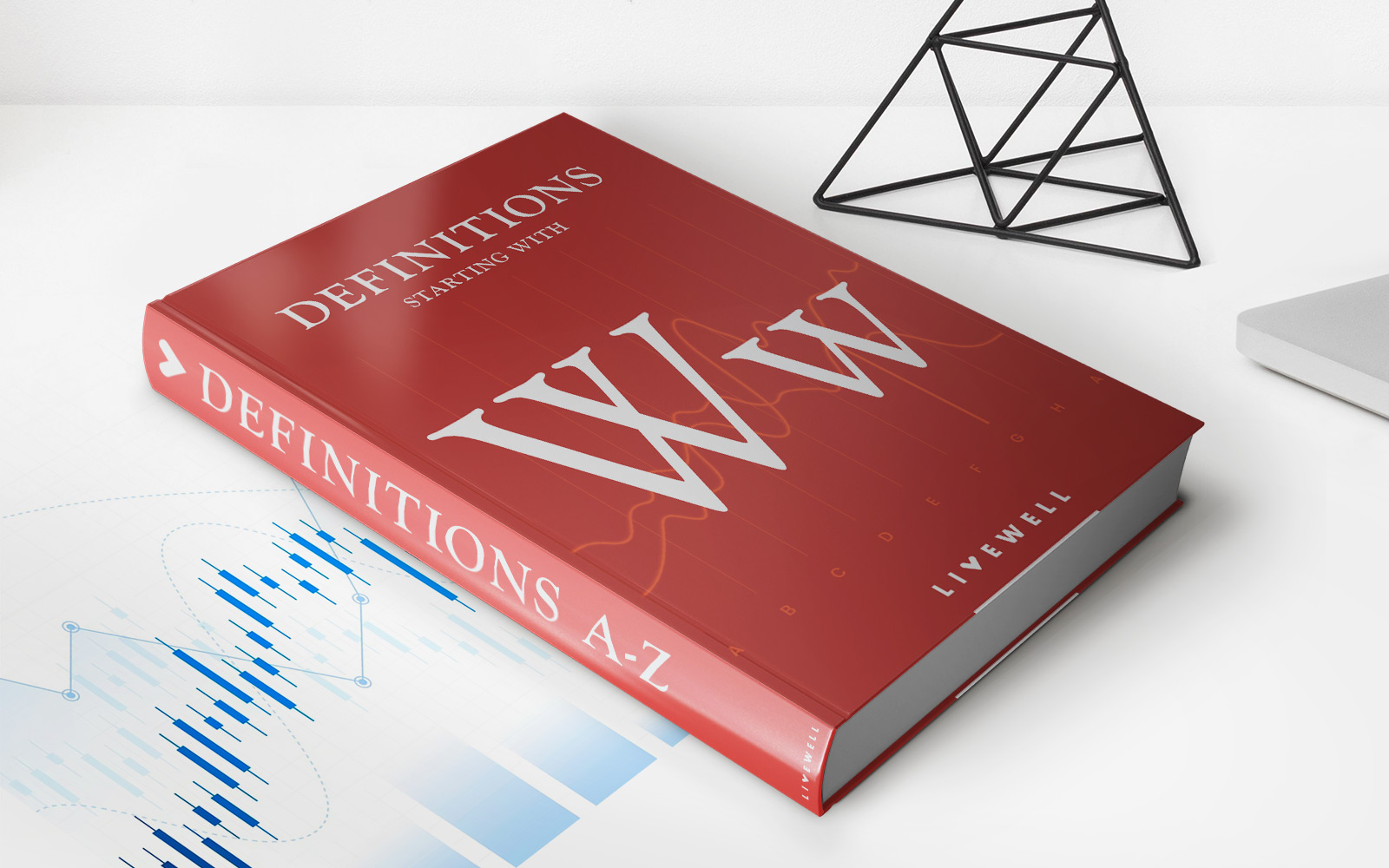

Finance
Does Changing Jobs Affect Your Pension?
Published: November 27, 2023
Find out how changing jobs can impact your pension and learn important financial considerations for smoother transitions in your career.
(Many of the links in this article redirect to a specific reviewed product. Your purchase of these products through affiliate links helps to generate commission for LiveWell, at no extra cost. Learn more)
Table of Contents
- Introduction
- Understanding Pensions
- Importance of Pensions
- Types of Pensions
- Employer-Sponsored Pensions
- Defined Benefit Pension Plans
- Defined Contribution Pension Plans
- Impact of Changing Jobs on Pensions
- Transfer Options for Pensions
- Options for Defined Benefit Plans
- Options for Defined Contribution Plans
- Factors to Consider Before Making a Decision
- Conclusion
Introduction
When it comes to planning for retirement, pensions play a crucial role in ensuring financial security during the golden years. However, life is unpredictable, and many individuals find themselves changing jobs throughout their careers. Naturally, this raises the question: does changing jobs affect your pension?
In this article, we will delve into the intricacies of the pension system and explore the various factors that come into play when switching jobs. Understanding how your pension is affected by job changes is crucial in making informed decisions about your retirement savings.
Pensions are a form of long-term savings, designed to provide a steady income during retirement. They typically involve contributions made by both the employee and employer, accumulating over the years and earning interest or investment returns. And while pensions are undoubtedly beneficial, it’s important to understand the different types of pensions and how they may be impacted by changes in employment.
Employer-sponsored pensions are one of the most common types of retirement plans. These pensions are typically provided by companies to their employees as a part of their benefits package. There are two main types of employer-sponsored pensions: defined benefit plans and defined contribution plans.
Defined benefit plans guarantee a specific monthly income to retirees based on a formula that takes into account factors such as salary, years of service, and age at retirement. These plans are managed by the employer and often provide a secure and stable source of retirement income.
On the other hand, defined contribution plans, such as 401(k) plans, allow employees to contribute a portion of their salary into an investment account. These contributions are often matched by the employer, and the funds grow tax-deferred until retirement. The final pension amount is dependent on the contributions made and the investment returns.
Now that we have a basic understanding of pensions and the types of plans available, let’s take a closer look at how changing jobs can impact your pension and what options you may have to navigate these changes.
Understanding Pensions
Pensions are a form of retirement savings that provide individuals with a steady income during their post-work years. They are designed to supplement any governmental social security benefits and enable retirees to maintain their standard of living. Understanding how pensions work is essential in ensuring financial security during retirement.
A pension is established through contributions made by both the employee and employer over the years of employment. These contributions are invested in various financial instruments, such as stocks, bonds, and real estate, to generate returns. The accumulated funds in the pension account grow tax-deferred until retirement.
The amount of pension income an individual receives is determined by various factors, including the length of employment, salary level, and the specific pension plan’s formula. Different types of pension plans have different payout structures, as well as criteria for eligibility and withdrawal.
One of the most common types of pension plans is the defined benefit plan. In this plan, the pension benefit is pre-determined based on a formula that considers factors such as salary level, years of service, and age at retirement. Employees who participate in a defined benefit plan can expect a fixed monthly income during their retirement years.
Defined contribution plans, on the other hand, do not promise a specific benefit amount. Instead, employees contribute a portion of their salary to an individual account that is invested in various financial assets. The final pension amount is dependent on the contributions made, investment returns, and the individual’s decisions regarding withdrawals during retirement.
In recent years, there has been a shift from defined benefit plans to defined contribution plans due to their cost predictability and flexibility. This shift places more responsibility on individuals to actively manage their retirement savings and make appropriate investment choices.
Pensions provide various benefits to individuals preparing for retirement. They offer a regular income stream that can help cover living expenses, healthcare costs, and other financial obligations during retirement. Pensions also provide peace of mind and financial security, knowing that there is a stable source of income throughout one’s golden years.
However, it’s important to note that pensions are subject to market fluctuations and economic conditions. Poor investment performance can lead to lower pension payouts, while positive market performance can increase the value of the pension account.
In the next sections, we will explore the impact of changing jobs on pensions and the options available to individuals who find themselves in this situation.
Importance of Pensions
Pensions play a critical role in ensuring financial security and stability during retirement. As individuals age and transition out of the workforce, having a reliable source of income becomes imperative to cover daily expenses, healthcare costs, and maintaining a comfortable lifestyle. Here are several reasons why pensions are essential:
1. Retirement Income: Pensions provide a consistent stream of income that allows individuals to sustain their desired standard of living throughout their retirement years. By offering a reliable source of income, pensions help retirees maintain financial independence and reduce the risk of running out of savings.
2. Long-Term Financial Planning: Pensions promote long-term financial planning, encouraging individuals to save for retirement early on in their careers. By making regular contributions over several years, employees can build a substantial pension fund that will support them during their golden years.
3. Tax Advantages: Pensions often come with tax advantages, allowing contributions to be made on a pre-tax basis. This means that individuals can reduce their taxable income during their working years, potentially leading to lower tax liabilities and more savings over time.
4. Employer Contributions: Many pensions are employer-sponsored, with companies making contributions on behalf of their employees. This employer match can significantly boost an individual’s retirement savings, ensuring a more substantial pension fund when the time comes to retire.
5. Social Security Supplement: Pensions act as a supplement to government-provided social security benefits. While social security payments are valuable, they may not be sufficient to cover all expenses during retirement. Pensions help bridge the gap and provide an additional income source.
6. Financial Security: Having a pension offers individuals peace of mind and financial security. Knowing that there is a guaranteed income available provides comfort and alleviates the stress of financial uncertainty in one’s later years.
7. Legacy Planning: Pensions can also be passed on to beneficiaries, allowing individuals to leave behind a financial legacy for their loved ones. This can serve as a source of support for future generations and help meet ongoing financial needs.
Given the importance of pensions, it is crucial to understand the potential impact of changing jobs on these retirement savings plans. In the next section, we will explore how switching employers can affect pensions and the available options to mitigate any potential drawbacks.
Types of Pensions
There are various types of pensions available, each with its own characteristics and benefits. Understanding the different types of pensions can help individuals make informed decisions about their retirement savings. Here are some of the common types of pensions:
1. Defined Benefit Pensions: Defined benefit pensions, also known as traditional pensions, guarantee a specific monthly income to retirees based on a formula that considers factors such as salary, years of service, and age at retirement. These pensions are managed by the employer, who is responsible for investing the contributions and ensuring the pension fund’s viability. Retirees receive a predetermined amount each month for the rest of their lives, providing a stable and secure source of income.
2. Defined Contribution Pensions: Defined contribution pensions, such as 401(k) plans, differ from defined benefit pensions in that the final pension amount is not fixed. Instead, employees contribute a portion of their salary to an individual account, often with contributions matched by the employer. These contributions are invested in various financial assets, allowing the pension fund to grow over time. The final pension amount is dependent on the contributions made, the investment returns, and the individual’s decisions regarding withdrawals during retirement.
3. Government Pensions: Government pensions are retirement plans provided by federal, state, or local governments. These pensions are often available to government employees, including teachers, police officers, firefighters, and civil servants. Government pensions typically offer defined benefit plans, providing retirees with a guaranteed income based on their years of service and salary levels. However, some government entities also offer defined contribution plans or a combination of both.
4. Individual Retirement Accounts (IRAs): IRAs are retirement accounts that individuals can set up on their own. There are two main types of IRAs: traditional and Roth. Traditional IRAs allow individuals to make tax-deductible contributions, and the funds grow tax-deferred until withdrawal during retirement. Roth IRAs, on the other hand, involve after-tax contributions, and qualified withdrawals are tax-free. Both traditional and Roth IRAs offer a wide range of investment options and provide individuals with more control over their retirement savings.
5. Self-Employed Pensions: Individuals who are self-employed have the option to establish their own pension plans. These plans, such as a Simplified Employee Pension (SEP) IRA or a Solo 401(k), allow self-employed individuals to contribute a portion of their income to a retirement account and enjoy potential tax benefits. Self-employed pensions offer flexibility and control over retirement savings for entrepreneurs and freelancers.
It’s important to note that the availability and structure of pensions may vary depending on the country, employer, and specific circumstances. As individuals navigate their careers and plan for retirement, understanding the type of pension they have or may be eligible for is essential in making informed decisions about their financial future.
Now that we have examined the different types of pensions available, it’s time to explore the impact of changing jobs on pension benefits and the options available to individuals in such situations.
Employer-Sponsored Pensions
Employer-sponsored pensions are retirement plans provided by companies as part of their employee benefits package. These pensions serve as an important tool in attracting and retaining talented employees, helping them save for retirement and ensuring financial security in their golden years. Let’s take a closer look at employer-sponsored pensions and how they work.
Employer-sponsored pensions can take two main forms: defined benefit plans and defined contribution plans.
Defined Benefit Plans: Defined benefit plans promise a specific monthly income to retirees based on a formula that considers factors such as salary level, years of service, and age at retirement. Employers manage these plans and bear the investment risks associated with ensuring that the pension fund can meet its obligations. Retirees receive a predetermined amount each month, often for the rest of their lives, providing a stable and secure source of income.
Defined Contribution Plans: Defined contribution plans, such as 401(k) plans, require employees to contribute a portion of their salary to an individual account. Employers may also contribute to the employee’s account, usually matching a percentage of the employee’s contributions. The funds contributed to the defined contribution plan are invested in a range of financial instruments, such as stocks, bonds, and mutual funds. The final pension amount depends on the accumulated contributions, the investment returns, and the individual’s choices regarding withdrawals during retirement.
Employer-sponsored pensions have several advantages for employees:
1. Employer Contributions: Many employer-sponsored pensions include employer matching contributions, where the company contributes a percentage of the employee’s contributions. This matching feature can significantly boost retirement savings and accelerate the growth of the pension fund.
2. Tax Benefits: Contributions made to employer-sponsored pension plans are often tax-deductible, reducing the employee’s taxable income for the current year. Additionally, the funds grow tax-deferred, allowing for potential tax savings in the long run.
3. Professional Management: Employer-sponsored pensions are typically managed by professionals who oversee the investment of the pension funds. This expertise helps ensure that the pension fund is appropriately diversified and maximizes potential returns while managing risk.
4. Automatic Enrollment: Some employers automatically enroll employees in their pension plans, making it easier for individuals to start saving for retirement. Automatic enrollment encourages employees to participate in the pension plan and establish good financial habits early on.
It’s important to note that employer-sponsored pensions may have certain eligibility criteria, such as a minimum period of service or a specified age before employees can participate. Additionally, the availability and structure of employer-sponsored pensions can vary from company to company.
Understanding the specific details of your employer-sponsored pension is crucial in planning for retirement. It is also essential to consider the potential impact of changing jobs on your pension benefits. In the next section, we will explore how changing jobs can affect your pension and the options available to navigate these changes.
Defined Benefit Pension Plans
Defined benefit pension plans are a type of employer-sponsored retirement plan that guarantees a specific monthly income to retirees based on a formula that considers factors such as salary level, years of service, and age at retirement. These plans provide a sense of security and stability, as retirees receive a predetermined amount each month, often for the rest of their lives. Let’s delve into defined benefit pension plans and how they work.
With defined benefit plans, the responsibility for managing the pension fund lies with the employer. Employers contribute money to the pension fund throughout the employee’s working years, and these funds are invested to generate growth and income. The employer assumes the investment risk and ensures that the pension fund can meet its future payout obligations.
The formula used to calculate the pension benefit varies between companies but often takes into account factors such as the employee’s salary history, length of service, and a specific retirement age. For example, a common formula might be to calculate the pension benefit as a percentage of the average salary during the final years of employment multiplied by the number of years worked.
One of the key advantages of defined benefit plans is the guaranteed income stream they provide. Retirees can rely on a steady and predictable pension payment each month, even in times of economic uncertainty. This feature offers a sense of financial security and helps individuals plan for retirement with confidence.
Defined benefit plans also have other benefits:
1. Employer Contributions: Employers bear the responsibility of funding the pension plan and making contributions on behalf of their employees. These employer contributions can significantly add to the retirement savings, helping employees secure a more substantial pension payout upon retirement.
2. Professional Investment Management: Defined benefit plans are professionally managed by investment experts hired by the employer or a designated pension fund manager. This expertise helps ensure that the pension fund is invested in a diversified portfolio of assets, aiming to generate returns and meet the future pension obligations.
3. Pension Benefit Guaranty Corporation (PBGC) Protection: In the United States, defined benefit plans are protected by the Pension Benefit Guaranty Corporation (PBGC). If a company’s defined benefit plan becomes insolvent, the PBGC steps in to ensure that retirees continue to receive a portion of their pension benefits.
It’s important to note that accessing funds from a defined benefit plan before retirement age may be limited or subject to penalties. Additionally, the pension benefit may be impacted if employees leave the company before reaching the plan’s vesting period, which determines the eligibility to receive the full pension benefit.
If you are considering changing jobs, it’s essential to understand the potential impact on your defined benefit pension plan. In the next section, we will explore the options available for managing your defined benefit plan when changing employers.
Defined Contribution Pension Plans
Defined contribution pension plans are a popular type of employer-sponsored retirement plan that involves employees making regular contributions to an individual account. The final pension amount in a defined contribution plan is not predetermined, as it depends on the contributions made, the investment returns, and the individual’s choices regarding withdrawals during retirement. Let’s delve into the details of defined contribution pension plans and how they work.
In a defined contribution plan, such as a 401(k) plan, employees contribute a portion of their salary to an individual account. These contributions are often made on a pre-tax basis, meaning they are deducted from the employee’s taxable income. Employers may also contribute to the account, usually matching a portion of the employee’s contributions up to a certain percentage.
The funds in the defined contribution account are typically invested in a selection of financial instruments, such as stocks, bonds, mutual funds, or target-date funds. These investments have the potential to grow over time, but they also carry the risk of fluctuating with market conditions. The individual account balances reflect the total contributions made by the employee and the investment performance over the years.
One of the key advantages of defined contribution plans is the flexibility they offer:
1. Portability: Defined contribution plans are portable, meaning that employees can typically take their account balances with them if they change jobs. This allows individuals to consolidate their retirement savings or roll over the funds into another retirement account, such as an IRA.
2. Investment Control: Within the defined contribution plan, employees often have control over how their contributions are invested. They can choose from a range of investment options based on their risk tolerance and financial goals. This level of control enables individuals to tailor their investment strategy to their specific needs.
3. Potential for Growth: The growth potential of a defined contribution plan depends on the performance of the investments chosen. Over time, consistent contributions and strong investment returns can lead to substantial growth in the pension account, offering individuals the opportunity to accumulate a significant retirement fund.
4. Flexibility of Withdrawals: With defined contribution plans, individuals have flexibility in terms of when and how they withdraw funds during retirement. They can choose to take a lump-sum distribution, set up periodic payments, or utilize other withdrawal strategies that best fit their financial situation and lifestyle.
It’s important to note that while defined contribution plans offer flexibility and potential growth, they also place more responsibility on employees to actively manage their retirement savings. Individuals must make informed decisions regarding their investment choices, contribution levels, and withdrawal strategies to maximize the benefits of a defined contribution plan.
If you are contemplating a job change, it’s crucial to consider the implications for your defined contribution pension plan. In the next section, we will explore the options available to manage your defined contribution plan when transitioning to a new employer.
Impact of Changing Jobs on Pensions
Changing jobs can have implications for your pension, whether you have a defined benefit plan or a defined contribution plan. It’s important to understand how job changes can impact your pension and what options you have to navigate these changes. Let’s explore the potential impact of changing jobs on pensions:
Defined Benefit Plans: If you are participating in a defined benefit pension plan and switch employers, you may face a few possible scenarios:
– Full Vesting: If you are fully vested in your defined benefit plan, meaning you have met the requirements to receive the full pension benefit, you may be entitled to continue accruing pension benefits from your previous employer. However, it’s crucial to understand the terms of the plan, as some require a certain number of years of service to qualify for full vesting.
– Partial Vesting: If you are partially vested, you may be entitled to receive a portion of your pension benefit based on the years of service completed. In this case, switching employers may result in a reduced pension amount from your previous employer, but you may still be eligible to continue accruing benefits with your new employer’s plan.
– No Vesting: If you haven’t met the vesting requirements of your defined benefit plan, you may not be entitled to any pension benefits from your previous employer. However, it’s essential to review the specific terms of the plan, as you may have options to carry over your previous service credits or negotiate with your new employer to recognize your past service.
Defined Contribution Plans: When changing jobs, individuals with defined contribution plans have more flexibility:
– Account Portability: Defined contribution plans, such as 401(k) plans, are typically portable, allowing you to transfer your account balance from your previous employer’s plan to your new employer’s plan or an individual retirement account (IRA). This way, you can continue to benefit from the tax advantages and potential growth of your retirement savings.
– Consolidation: If you have multiple defined contribution accounts from previous employers, you may consider consolidating them into a single account. Consolidation can simplify your retirement savings management and potentially provide better investment options and lower fees.
– Continued Contributions: Switching jobs doesn’t necessarily mean you have to stop contributing to your retirement savings. You can continue making contributions to your new employer’s defined contribution plan or explore other retirement savings options, such as an IRA, to maintain consistent savings for your retirement.
Before making any decisions, it’s important to consider factors such as the vesting status of your defined benefit plan, the investment options and fees associated with your defined contribution plan, and the overall impact on your retirement savings strategy.
Seeking advice from a financial advisor or pension specialist can help you understand the specific impact of changing jobs on your pension and guide you in making informed decisions.
Remember, the decisions you make regarding your pension when changing jobs can significantly impact your retirement savings. It’s crucial to carefully review the terms of your pension plans and consider all available options before making any final decisions.
Transfer Options for Pensions
When it comes to changing jobs or transitioning between different types of pensions, understanding the transfer options available for your pension is essential. Depending on the type of pension plan you have and the specific circumstances, there are several transfer options to consider. Let’s explore the common transfer options for pensions:
Defined Benefit Pension Transfers:
– Pension Buyout: In some cases, employers offer a pension buyout option when employees leave the company. A pension buyout allows you to take a lump-sum cash payment in exchange for giving up your future pension benefits. This option provides immediate access to your pension funds, but it’s essential to carefully evaluate the potential tax implications and consult with a financial advisor before making a decision.
– Preserving Pension Benefits: If you are transitioning to a new employer with a defined benefit plan, you may have the option of preserving your pension benefits by transferring your accrued benefits from your previous employer’s plan to the new plan. This way, you can continue building upon your existing pension and maintain the retirement benefits you have accumulated.
– Pension Freeze: In some cases, when individuals change jobs, their pension benefits may be “frozen” by the previous employer. This means that while you may still be entitled to the pension benefits based on your accrued service, further benefits won’t continue to accrue. It’s important to understand the terms of the freeze and explore other options for continuing to build your retirement savings.
Defined Contribution Pension Transfers:
– Account Rollover: If you have a defined contribution pension plan, such as a 401(k), you often have the option to rollover your account balance into an individual retirement account (IRA) or your new employer’s retirement plan. An account rollover allows you to consolidate your retirement savings, potentially offering greater investment options and simplifying retirement account management.
– Continued Contributions: When changing jobs, you may have the opportunity to continue making contributions to your new employer’s defined contribution plan. This allows you to maintain consistent saving habits and take advantage of any employer matching contributions offered.
– Consolidation: If you have multiple defined contribution accounts from previous employers, consolidating them into a single account can simplify your retirement savings management and potentially provide better investment options and lower fees.
When considering a transfer of your pension, it’s crucial to evaluate the potential impact on your retirement savings, including any fees, tax implications, and the investment options available. Seek guidance from a financial advisor or pension specialist who can assist you in making the best decision based on your specific circumstances and long-term financial goals.
Remember, pension transfers involve complex financial considerations, and it’s important to carefully review the terms of your current pension plan and understand all available options before proceeding with any transfers.
Options for Defined Benefit Plans
When it comes to defined benefit plans, individuals facing a job change or considering retirement have several options to navigate their pensions. These options provide flexibility and the opportunity to make choices that align with their financial goals and circumstances. Let’s explore the common options available for defined benefit plans:
1. Pension Buyout: Some employers offer a pension buyout option when employees leave the company. This involves receiving a lump-sum cash payment in exchange for giving up your future pension benefits. By taking a pension buyout, you gain immediate access to a significant portion of your pension funds, allowing for greater control over your retirement savings. However, it’s crucial to carefully evaluate the potential tax implications, investment opportunities, and longevity risk before making a decision.
2. Lump-Sum Distribution: In some cases, individuals may have the option to receive their defined benefit pension benefits as a lump-sum distribution, rather than as a monthly income stream. This lump-sum payment provides a substantial amount upfront that can be invested or used according to your financial needs. However, it’s important to consider factors such as tax consequences, investment expertise, and future income needs before deciding on a lump-sum distribution.
3. Pension Continuation: If you are transitioning to a new employer with a defined benefit plan or have multiple pension plans, you may have the option to continue accruing benefits in the new plan or maintain multiple pension accounts. This allows you to combine and build upon your existing pension benefits, ensuring the continuity of your retirement income stream.
4. Preserving Pension Benefits: Preserving your pension benefits involves leaving your defined benefit plan untouched, even if you change jobs. This option allows you to retain the future pension benefits you have accumulated thus far, potentially providing a stable and guaranteed income stream during retirement. However, it’s essential to consider factors such as vesting requirements, future pension growth, and opportunities for additional retirement savings.
5. Spousal Benefits: Defined benefit plans often include provisions for spousal benefits, allowing the pension benefits to be transferred or continued for the spouse in the event of the employee’s death. It’s important to review and understand the spousal benefits available and consider the financial protection they provide for your loved ones.
When faced with options for your defined benefit plan, it’s crucial to carefully evaluate your financial objectives, risk tolerance, and overall retirement strategy. Seek guidance from a financial advisor or pension specialist who can provide personalized advice based on your specific circumstances and help you make informed decisions.
Remember, the options available for defined benefit plans may vary depending on the specific plan, the employer’s policies, and local regulations. Take the time to understand all available options and their implications to make the best choice for your retirement savings and financial well-being.
Options for Defined Contribution Plans
When it comes to defined contribution plans, such as 401(k) or similar retirement accounts, individuals have several options to consider when facing a job change or planning for retirement. These options provide flexibility and the opportunity to make choices that align with their financial goals and circumstances. Let’s explore the common options available for defined contribution plans:
1. Account Rollover: One of the most common options for defined contribution plans is to rollover your account balance into an individual retirement account (IRA) or your new employer’s retirement plan. This allows you to preserve the tax advantages and potential investment growth of your retirement savings. By consolidating your accounts, you can simplify your retirement savings management, potentially benefit from a wider range of investment options, and have better control over your retirement assets.
2. Continued Contributions: If you are changing jobs and your new employer offers a defined contribution plan, you may choose to continue making contributions to the new plan. This option allows you to maintain consistent savings habits and take advantage of any employer matching contributions offered, maximizing your retirement savings potential.
3. Consolidation: If you have multiple defined contribution accounts from previous employers, consolidating them into a single account can streamline your retirement savings management. By consolidating accounts, you can reduce administrative complexity, potentially access better investment options, and have a clearer picture of your overall retirement savings progress.
4. Investment Options and Asset Allocation: Defined contribution plans offer a range of investment options, such as stocks, bonds, mutual funds, and target-date funds. When faced with a job change or nearing retirement, you can review and adjust your investment choices and asset allocation within your defined contribution plan to align with your risk tolerance and financial goals. It’s important to regularly assess and rebalance your investments to ensure they align with your changing circumstances and market conditions.
5. Withdrawal Strategies: When reaching retirement age, individuals need to determine the best withdrawal strategy for their defined contribution plan. Options include a systematic withdrawal plan, where you receive regular distributions from your account, or purchasing an annuity that provides a guaranteed income stream for life. It’s important to carefully evaluate the tax implications, potential market risks, and future income needs when deciding on a withdrawal strategy.
When considering options for your defined contribution plan, it’s crucial to review the terms of your plan, understand the potential tax consequences, and seek guidance from a financial advisor or retirement specialist. They can provide personalized advice based on your specific circumstances and help you make informed decisions that align with your retirement goals.
Remember, the options available for defined contribution plans may depend on the specific plan rules, employer policies, and local regulations. Take the time to understand the available options and their implications to make the best choice for your retirement savings and financial well-being.
Factors to Consider Before Making a Decision
Before making any decisions regarding your pension, it’s important to carefully consider a range of factors that can impact your financial future. Whether you have a defined benefit plan or a defined contribution plan, evaluating these key factors will help you make informed choices that align with your retirement goals and financial circumstances. Here are some essential factors to consider:
1. Financial Needs and Retirement Goals: Evaluate your current financial needs and your desired lifestyle during retirement. Consider factors such as your expected expenses, healthcare costs, and other financial obligations. Understanding your retirement goals and the income required to support them is crucial in determining the best options for your pension.
2. Pension Options and Benefits: Review the specific terms and benefits of your pension plan. Understand the payout options available, such as lump-sum distributions, monthly income streams, or annuities. Consider factors such as survivor benefits for your spouse or beneficiaries and the potential for adjustments or inflation protection in the future.
3. Tax Implications: Understand the potential tax consequences of different pension options. Consider the tax treatment of lump-sum distributions, ongoing pension income, and any rollovers or transfers. Consult with a tax advisor to ensure you have a comprehensive understanding of the tax implications before making a decision.
4. Investment Considerations: Assess the investment options available within your pension plan or other retirement accounts. Analyze the historical performance, fees, and risk profiles of the investment options. Consider how the investment choices align with your risk tolerance, time horizon, and long-term financial goals.
5. Longevity and Financial Security: Analyze your life expectancy and the financial security offered by the pension options available to you. Assess the stability of the pension plan, such as the financial health of the employer or the pension fund, to ensure the sustainability of the pension benefits over the long term.
6. Personal Circumstances: Evaluate your personal circumstances, including your age, health, and overall financial situation. Consider factors such as other retirement savings, social security benefits, and any potential sources of income or expenses in retirement. These personal circumstances will help shape your decision-making process and ensure that you make the best choice for your unique situation.
7. Professional Advice: Seek guidance from a financial advisor or retirement specialist who can provide personalized advice. They can help you navigate the complex pension landscape, evaluate different options, and assess the potential impact on your financial well-being in retirement. A professional can help you make informed decisions based on your specific circumstances and retirement objectives.
Remember, each individual’s situation is unique, and it’s crucial to carefully evaluate these factors before making any decisions regarding your pension. Take the time to understand the options available, seek professional advice, and make choices that align with your long-term financial goals and retirement dreams.
Conclusion
Navigating the impact of job changes on your pension requires careful consideration and understanding of the options available. Whether you have a defined benefit plan or a defined contribution plan, taking the time to evaluate various factors can help you make informed decisions that align with your retirement goals and financial well-being.
It is crucial to understand the specifics of your pension plan, including the vesting requirements, payout options, and any potential tax implications. Consider factors such as your financial needs, retirement goals, and personal circumstances when deciding on the best course of action.
For those with defined benefit plans, options such as pension buyouts, preservation, or transferring benefits to a new plan should be reviewed in light of your long-term financial goals. In the case of defined contribution plans, account rollovers, consolidation, or continued contributions can provide flexibility and maximize potential growth.
Throughout the decision-making process, it’s important to seek guidance from financial advisors or retirement specialists who can provide personalized advice tailored to your specific needs. They can help evaluate the potential impact of your choices, address potential risks, and ensure that your retirement savings strategy aligns with your objectives.
Remember that retirement planning requires ongoing monitoring and adjustments as your circumstances change. Regularly reviewing your pension and retirement savings will ensure that you stay on track towards a secure and comfortable retirement.
Ultimately, the decisions you make regarding your pension when changing jobs can significantly impact your financial future. By carefully considering the available options, evaluating the relevant factors, and seeking professional advice, you can make informed choices that provide stability, security, and a prosperous retirement ahead.














